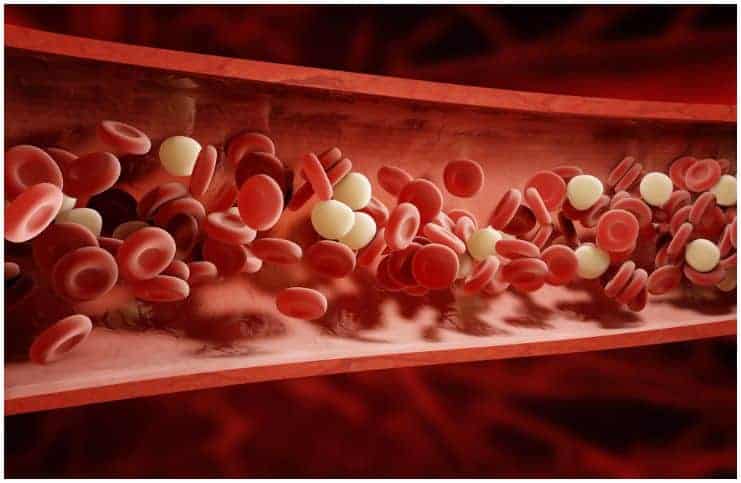Here are the top interesting facts about leukemia:
#1 It is cancer of the bone marrow (that produces blood cells) or blood resulting in the body making excessive abnormal white blood cells.
It is categorized into two main types – acute and chronic, which refers to how rapidly it progresses.
#2 Acute myeloid leukemia (AML) is a fast-growing (aggressive) form that usually starts in immature forms of blood-forming cells, found in the bone marrow.
Because the white blood cells produced are immature, they don’t have the infection-fighting properties of fully developed white blood cells. AML is most common in children. However, some adults develop it.
#3 Chronic lymphocytic leukemia (CLL) is a slow-growing type of cancer that gets worse slowly over time.
If you have CLL, you may not experience any signs and symptoms until the later stages of cancer. In some patients, symptoms never occur due to the fact that cancer progresses so slowly. It usually affects adults and doesn’t happen in children.
Statistics
#4 About 1,290,773 people in the U.S. are either living with, or are in remission from lymphoma, leukemia, or myeloma. Moreover, about 172,910 Americans are expected to be diagnosed with these conditions every year. Every day 170 people in the US are diagnosed with leukemia and 67 lose the fight.
#5 This condition is typically thought of as a children’s condition, however, it actually affects more adults. AML is a bit more frequent among men than among women, nevertheless, the risk in both sexes is less than 1 percent.
#6 Approximately 10,590 deaths (4,480 girls and women and 6,110 boys and men) from AML will occur this year.
#7 It is the most common type of cancer in teens and children, accounting for almost 33 percent of cancers. Nevertheless, approximately 90 percent are diagnosed in adults, with AML and CLL.
#8 An estimated 9,500 people are diagnosed with this severe condition every year in the United Kingdom. In 2012, about 352,000 individuals were estimated to have been diagnosed with this condition across the world.
#9 Since the 1960s, mortality from this condition has been declining in the United States, the European Union, and Japan, following progressive therapeutic advancements, especially for ALL in childhood and young age.
Symptoms
#10 Symptoms vary depending on the type and stage, but they usually include:
- swollen tonsils (the tonsils combat viruses and bacteria which enter the human body through the mouth);
- enlarged liver;
- night sweats;
- paleness;
- chills;
- anemia;
- fever;
- unexplained weight loss;
- swollen gums;
- fatigue or low energy;
- red spots on the skin;
- headaches;
- bone pain;
- enlarged spleen (the build-up of abnormal blood cells in the spleen may cause a feeling of swelling in the upper left side of the abdomen or fullness);
- blood clotting problems, due to low levels of platelets in the bloodstream. Furthermore, this may lead to easy bruising.
Causes
The causes of are not known precisely. However, in some patients, though, specific risk factors can include:
#11 Decrease in immunity – according to research, individuals with low immunity due to AIDS or HIV (human immunodeficiency virus) have 300 percent more chances than the general population to develop this condition.
More importantly, after organ transplantation, drugs that are used to reduce the risk of rejection and to lower the immune system are linked with a higher chance of CLL.
#12 Long-term exposure to harmful chemicals, like – formaldehyde or benzene (a colorless, flammable liquid with a sweet odor), usually in the workplace, is believed to be a risk factor for this condition.
#13 Other hazardous materials and professions include – cattle ranching, farmers involved in high levels of GMO-soybean production, herbicide use, dairy production, asbestos workers, rubber manufacturing workers, and tire repair workers.
#14 Individuals exposed to very high levels of radiation have a higher risk to develop this condition.
For instance, radiation used for diagnosis is not linked with this severe condition since it exposes individuals to lower levels of radiation. However, medical treatments which use radiation can be a source of high-level exposure.
#15 People with certain blood disorders, like – myeloproliferative or myelodysplasia disorders (a group of conditions that affects normal blood cell production in the bone marrow), have a higher chance of developing AML.
#16 Having genetic disorders, like Down syndrome, a rare genetic disorder caused by the presence of the 3rd copy of chromosome 21.
#17 Cigarette smoking is also linked with a 50 percent increase in ALL risk since the smoke of combusted tobacco has more than 4000 chemicals of which over fifty percent are considered potential carcinogens or toxins.
Treatment
#18 The treatment you get depends on how far it has spread, the type of leukemia the patient has, and how healthy the patient is. But the options include:
- surgery;
- stem cell transplant;
- targeted therapy;
- biologic therapy;
- radiation;
- chemotherapy.
#19 This condition needs aggressive treatment, like chemotherapy and other meds to prevent and treat symptoms, all of which can contribute to hypokalemia (low potassium levels),
#20 Hypokalemia is known to have the following symptoms – numbness, muscle weakness, muscle damage, fatigue, heart palpitations, and constipation.
Image credit – Shutterstock
READ THIS NEXT: Interesting Facts About Schizophrenia
References http://ccls.berkeley.edu/ https://www.ncbi.nlm.nih.gov/pmc/articles/PMC4799556/
